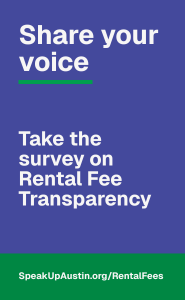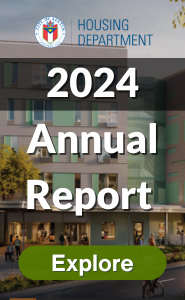General Obligation Affordable Housing Bond Expenditures
2006 Bond |
2013 Bond |
2018 Bond |
2022 Bond |
2022 General Obligation Bond
In 2022, City of Austin voters authorized a total of $350 million, for planning, designing, acquiring, constructing, renovating, improving and equipping affordable housing facilities for low and moderate-income persons and families, and acquiring land and interests in land and property necessary to do so, funding loans and grants for affordable housing, and funding affordable housing programs, as may be permitted by law; and the levy of a tax sufficient to pay for the bonds and notes.
2018 General Obligation Bond
In 2018, voters approved an additional $250 million in GO Bonds for the creation, rehabilitation, and retention of affordable rental and ownership housing. The contract with the voters resolution allocated $250 million in four categories: $100 million for land acquisition to include affordable housing development; $94 million for Rental Housing Development Assistance (RHDA) as identified by the Strategic Housing Blueprint; $28 million for the Ownership Housing Development Assistance (OHDA) for affordably priced ownership housing for income-eligible households; and $28 million for the Home Repair Program for minor home repairs and rehabilitation throughout the community in partnership with nonprofit organizations.
As of September 1, 2022, 2018 GO Bond funding commitments totaled $209,798,464.40, with the remaining balance of the 2018 GO Bonds at $34,047,308.53, as shown in the summaries below. The first provides a summary overview of expenditures, the graph shows how funds were distributed among programs. It is expected that the balance will support two more recommendations for Rental Housing Development Assistance funding totaling $10 million, and one additional acquisition totaling $20 million, thus spending down the remainder of the 2018 Bond.
Prop A. Affordable Housing 2018 GO Bond Spend Plan by Project
| Project Name | FY18-19 | FY19-20 | FY20-21 | FY21-22 | FY22-23 | Total |
|---|---|---|---|---|---|---|
| Land Acquisition | $20 million | $30 million | $30 million | $20 million | -- | $100 million |
| RHDA | $16 million | $18 million | $20 million | $20 million | $20 million | $94 million |
| OHDA | $4 million | $6 million | $6 million | $6 million | $6 million | $28 million |
| Home Repair | $2 million | $5 million | $6 million | $7 million | $8 million | $28 million |
| FY Total | $42 million | $59 million | $62 million | $53 million | $34 million | $250 million |
2013 General Obligation Bond
In 2013, Austin voters approved a $65 million General Obligation Bond (GO Bond) to fund affordable housing development for Austin’s homeless and low-income families. As of August 3, 2022, expenditures for the 2013 GO Bond appropriation totaled $64,970,652, leaving a remaining balance of $24,411.00 (see summary below). The remaining balance will be drawn down in the 2021-22 Fiscal Year to meet the remaining expenses for administering the 2013 GO Bond program.
2006 General Obligation Bond
In 2006, Austin voters approved a $55 million GO Bond to fund more than 2,569 affordable rental and homeownership units. Nearly 40 percent of the bonds were used to create or retain housing for persons with low-wage jobs, disabilities, or who might otherwise be homeless. Roughly 25 percent of the funding went to first-time homebuyers and home repair programs. The remaining 35 percent served low-income seniors, persons with mobility impairments, children who were abused or neglected, and persons with mental illness.
Review Progress to Date
The Affordable Housing Bonds allow the City to partner with local nonprofits and organizations to provide affordable housing options to residents, prevent displacement by keeping neighbors in their homes, acquire land dedicated to housing, and create better lives for all Austinites. Voters in the City of Austin approved bonds in the years 2006, 2013, 2018, and 2022. Review progress to date.



